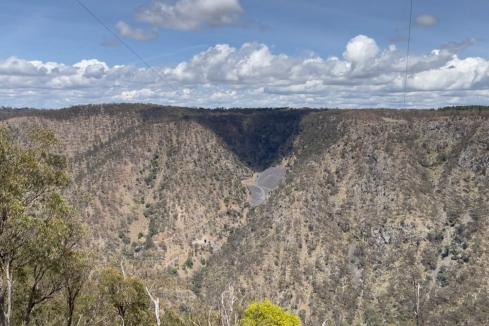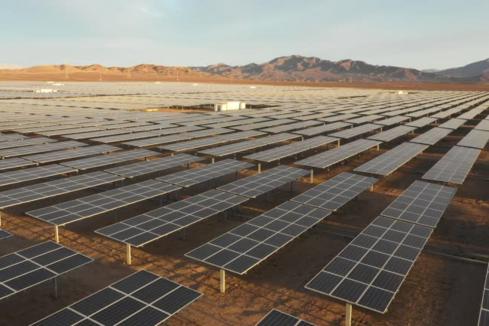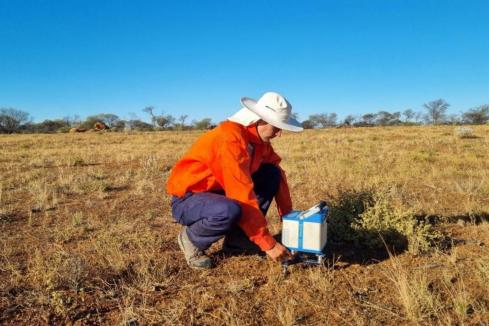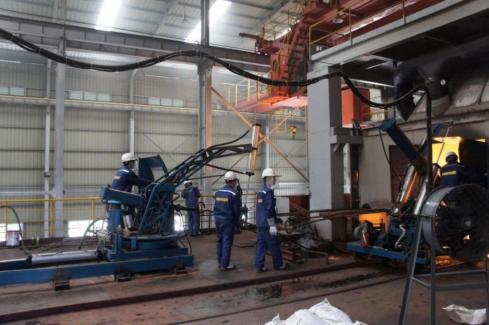Antimony is the latest critical metal to send the hearts of ASX punters aflutter, but with new "must-have" metals constantly emerging, investors may be feeling just a little confused by the ever-changing landscape. Bulls N’ Bears takes a look into the rise and rise of the metal also sometimes referred to as stibnite and the companies jumping on the increasingly raucous bandwagon.


Antimony is the latest critical metal to send the hearts of ASX punters aflutter, but with new "must-have" metals constantly emerging, investors may be feeling just a little confused by the ever-changing landscape.
So today, Bulls N’ Bears takes a look into the rise and rise of the metal also sometimes referred to as stibnite and the companies jumping on the increasingly raucous bandwagon.
Four years ago, it was lithium that sparked a firestorm in the market, running from US$6000 (AU$8813) to US$80,000 (AU$117,504) a tonne for carbonate and sending the silvery-white metal’s explorers through the roof – with share prices sometimes gaining 2000 per cent or more in a matter of months. The reason, of course, was the global push to reduce carbon emissions, which led to a booming demand for electrical vehicles (EVs) and the lithium-ion batteries that provided the power source.
More recently and for the same broad reason, the market has gyrated towards rare earths (in particular, neodymium and praseodymium) metals for manufacturing high-powered magnets for use in EV engines and direct-drive wind turbines.
Then came niobium, graphite, scandium and tungsten.
Today, it is antimony and to a lesser extent hafnium, although it is still only the middle of the month, so perhaps we shouldn’t write it off too early...
Antimony’s demand, though, has leapt in the past four years, not only because of its invaluable addition to the relentless progress of renewable energy technology, but also because of its important use as a fire retardant and in the defence sector as a hardening alloy.
At a basic level, antimony is most commonly found in association with gold, but also occurs alongside some silver-lead-zinc deposits as a sulphide called stibnite. However, it is rarely found in its own pure state.
Perhaps not surprisingly given its status as the second biggest producer of gold in the world, Australia is also the biggest exporter of antimony, pumping out 21.7 per cent of global exports in 2022. But the nation still only produced 4000 tonnes and the lofty status is because most of the other global producers don’t export and instead are holding tightly onto their own stocks.
As it is with many critical metals, it is China that holds the whip hand when it comes to the silvery-grey metal. By producing 40,000 tonnes a year, or 48 per cent of global production, it eclipses the next biggest producer – Tajikistan with 21,000 tonnes.
So, with the constant tit-for-tat manoeuvres that seem to dominate world trade nowadays, it should not come as a surprise that the cause of the recent interest in antimony came after the Chinese government last month handed down an export ban on the metal. But the move, perhaps more than anything else, has also inadvertently exposed the frail nature of the global market because China had previously provided 63 per cent of imports to the United States, which produces none.
After China and Tajikistan, which account for 68.5 per cent of global production, a further 22 per cent is made up from Turkey, Myanmar, Iran, Kazakhstan, Bolivia, Mexico, Russia and Vietnam – hardly the most Western-friendly suppliers. And that is where the problem of an alternative supplier for the US and the broader western nations becomes a particularly difficult one.
With less than 10 per cent of global production in hands that are potentially going to think twice before supplying the West’s antimony needs, options are strictly limited.
Enter Australia and in particular, the nation’s gold producers. With a looming shortage of antimony and prices reaching US$25,000 (AU$37,600) a tonne, the ASX announcement board has lit up in the past couple of weeks with gold companies all dusting off the antimony file in the back room and revisiting assays.
And some are getting close to producing. Below are a few of the listed companies, which recently unveiled antimony interests.
At the top of the list must be Larvotto Resources. Just nine months ago, the company bought the Hillgrove gold and antimony project from administrators for $8 million, inclusive of a $5 million environmental bond.
Even more pleasingly, the project came with plant and equipment with $150 million replacement value.
Since then and surely proving up the Hillgrove purchase as one of the best deals of the year, Larvotto concluded from its recent prefeasibility study (PFS) that the Hillgrove project, with a modest $73 million in capital expenditure, will be capable of producing 41,000 ounces of gold and 5400 tonnes of antimony per annum during a seven-year mine life. It will spit out an estimated EBITDA of $93 million annually at current prices and pay back the project back within two years.
Unsurprisingly, the company’s share price has risen 235 per cent since mid-last month to 40c a share.
Nagambie Resources, 50km east of Bendigo in Northern Victoria, has staked its claim as an antimony hopeful after recently releasing a maiden resource at the Nagambie mine of 415,000 tonnes grading 3.6 grams per tonne gold and 4.3 per cent antimony for 47,800 ounces of gold and 17,800 tonnes of antimony.
The updated resource has prompted chief executive officer James Earle to favourably compare the deposit with the operating Costerfield mine, which lies 15km west of Nagambie and hosts a resource of 330,000 ounces of gold and 29,000 tonnes of antimony.
Costerfield, 100 per cent-owned by TSX-listed Mandalay Resources, last year produced 36,000 ounces of gold and 1860 tonnes of antimony. In just a month, Nagambie’s share price charged more than 328 per cent.
Marquee Resources, which has seen its shares run 70 per cent higher recently, are the owners of the antimony-prospective Mt Clement Eastern Hills project in Western Australia’s Ashburton Basin. Although the company only has a relatively small 225-tonne contained resource, the project would benefit from further work since it directly abuts the Black Cat Syndicate’s Mt Clement antimony-lead project that hosts 13,200 tonnes of the metal. It is regarded as Australia’s fourth-highest grading antimony deposit after Hillgrove, Costerfield and the now-defunct Wild Cattle Creek in New South Wales.
Aruma Resources’ shares tripled in a day to 4.7c recently after it reported 1.1 per cent antimony grades from surface sampling, alongside copper running at 11.83 per cent from its Fiery Creek project near Mount Isa.
Octava Minerals also pulled out its Sunday best recently by revealing historic hits of 13.6 per cent and 11.5 per cent antimony at its Yallalong project in WA, sending the company’s stock up by almost 200 per cent to 14c a share.
Dart Mining is dusting off its Rushworth gold project in Victoria to check for antimony, Novo Resources has spotted an old high-grade mine on its Pilbara tenements and similarly, Kalamazoo Resources is revisiting antimony assays at its South Muckleford project in Victoria where historical mining recorded grades as high as 42 per cent.
Critical Resources is crunching through desktop studies at its Hillgrove South prospect, directly south of Larvotto’s Hillgrove mine, to sharpen up its prospects of making an antimony find. Iltani Resources is also on the march, nearly doubling its share price to 30c after revealing average rock-chip assays from two veins at its Reward prospect in Northern Queensland, clocking in at 16.2 per cent and 10.9 per cent antimony.
And not to be left out, iTech Minerals recently pushed out rock-chip samples of 22 per cent antimony at its Sabre prospect and 12.6 per cent at its Falchion target in the Northern Territory’s Reynolds Range, while both Castle Minerals and Great Boulder Resources jointly announced elevated antimony levels as they pursued orogenic gold deposits at their Polelle project in WA’s Mid West region.
Turning to overseas prospects, ASX-listed Felix Gold has run higher on reports of historical 58 per cent grades of the silvery-grey metal at its Treasure Creek project in Alaska. If proven up, it would surely supplement the company’s existing 833,000 ounces of gold.
Sun Silver has roared 70 per cent higher after reporting high-grade antimony at its Maverick Springs silver-gold project in Nevada. And yet another explorer, Locksley Resources, has popped 25 per cent on rock-chip results of 11.2 per cent antimony at its Desert mine in California.
Also joining the party is Antilles Gold, which a few days ago revealed that recent metallurgical testwork had identified 4.9 per cent antimony from alkaline leaching of 53,000 tonnes per annum of the gold-arsenopyrite concentrate it is forecast to produce at its La Demajagua gold-silver mine in Cuba.
There are already others joining the fray, with the prices of gold and its companion metal antimony showing no signs of slowing down any time soon. And given the historical importance of gold mining in Australia, it may be worth posing the question of exactly how much antimony has been passed through to tailings dams during the past decade or two after being judged at the time as being too uneconomic to extract?
The nation’s gold miners could literally be sitting on another gold mine, this time made up of the metal-hardening commodity.
Is your ASX-listed company doing something interesting? Contact: matt.birney@businessnews.com.au













